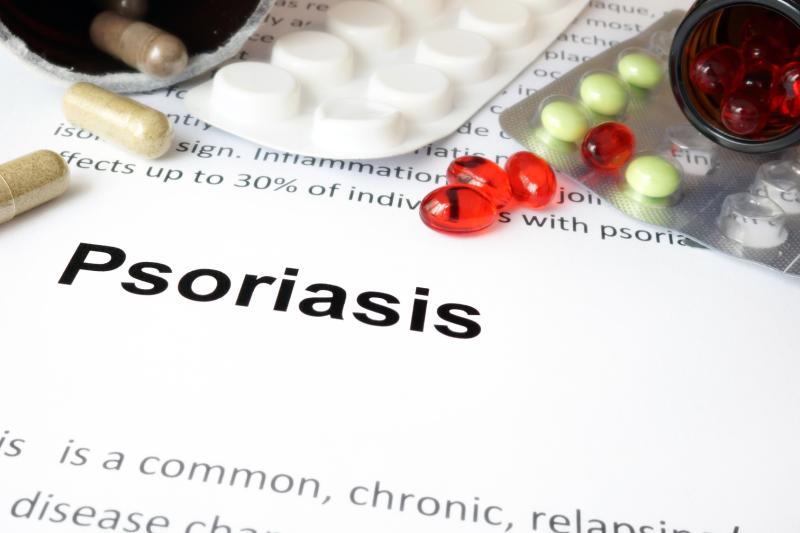 Psoriasis: What can you do in the community pharmacy?
Psoriasis: What can you do in the community pharmacy?Brodalumab has exhibited long-term efficacy and consistent safety profile for more than 2 years in the treatment of patients with psoriasis, results of the phase III AMAGINE-2 trial show.
“Most patients who received brodalumab 210 mg every 2 weeks after ustekinumab treatment achieved complete skin clearance after 120 weeks, suggesting that brodalumab may be well suited for long-term treatment of moderate-to-severe psoriasis in patients who received prior systemic therapy,” the researchers said.
In this randomized, double-blind, placebo- and active comparator-controlled trial, patients received either ustekinumab through week 52 followed by brodalumab 210 mg every 2 weeks, continuous brodalumab 210 mg every 2 weeks, or any dose of brodalumab. Observed data, last observation carried forward and nonresponder imputation analyses were used to report efficacy data through 120 weeks.
Observed data analysis revealed that 61.1 percent of patients who received brodalumab 210 mg every 2 weeks achieved 100-percent improvement from baseline in Psoriasis Area and Severity Index (PASI) at 120 weeks, while 75.6 percent and 84.4 percent of patients achieved 90-percent and 75-percent improvement, respectively. [J Am Acad Dermatol 2020;82:352-359]
Patients who received ustekinumab through 52 weeks followed by brodalumab 210 mg every 2 weeks achieved skin clearance response comparable to those who received continuous brodalumab 210 mg every 2 weeks.
In an earlier study examining efficacy loss of biologic agents including etanercept, adalimumab, ustekinumab and infliximab in the long term, 20–32 percent of patients lost PASI 75 response throughout the treatment duration. The decrease in long-term efficacy correlated with the formation of antidrug antibodies that can disable therapeutic effects. [J Dermatolog Treat 2014;25:78-82]
“Our [current] findings show that 91.2 percent and 88.9 percent of patients who received brodalumab during the open-label extension achieved PASI 75 at weeks 52 and 120, respectively,” the researchers said. “The maintenance of efficacy observed with brodalumab may be related to the lack of neutralizing antidrug antibodies detected in any samples in AMAGINE-2.”
Furthermore, the safety profile of brodalumab through 120 weeks was similar to that of blinded study periods. Rates of overall treatment-emergent adverse events (AEs) saw a decline over time compared with the preceding years, and the most common AEs were similar to those seen in other brodalumab trials. [J Dermatol Sci 2016;81:44-52; J Eur Acad Dermatol Venereol 2016;30:1957-1960]
The overall rate of brodalumab-related AEs was also consistent with that observed during long-term ustekinumab studies, and common AEs associated with the study drug, such as headache and arthralgia, were comparable to those seen in long-term studies of ustekinumab and secukinumab. [J Am Acad Dermatol 2012;66:731-741; Br J Dermatol 2017;177:1033-1042]
“A large number of discontinuations toward the end of [our] study (31 percent in the final 6 months) were due to early termination and led to differences between observed data and nonresponder imputation results,” the researchers noted.